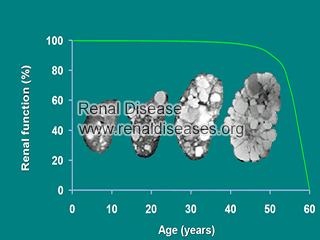Whatsapp: +8615512139310
- Email us:
 As a kind of progressive disorder, Polycystic Kidney Disease is categorized into five stages. One the one hand, understanding more about the stages can help prevent further decline of kidney function. On the other hand, it can help patients live a meaningful life.
As a kind of progressive disorder, Polycystic Kidney Disease is categorized into five stages. One the one hand, understanding more about the stages can help prevent further decline of kidney function. On the other hand, it can help patients live a meaningful life.
Occurrence stage As a genetic disorder, some of the patients are usually born with small cysts. And it is hard to detect any abnormal sign before their 20s. If your family members are suffering from this disease, it is of great importance to do some tests to observe the growth of cysts.
Growth period The majority of the patients are at their 30s to 40s. In this stage, the fluid-filled sac will grow constantly. Western medicine is more inclined to symptomatic treatment, for instance, medicines for high blood pressure and so on. Actually, some traditional Chinese medicine should be used to remove stasis by promoting blood circulation and slow down the growth rate of cysts.
Enlargement stage With age, there will be a further growth of cysts. As a consequence, a series of clinical symptoms like back pain, proteinuria, hematuria, etc are more likely to come into being. Besides, this is a critical period to protect kidney function.
Cyst rupture stage Under certain circumstances, the enlarged cysts can get rupture easily. Once it progresses into this stage, both early and effective treatments should be taken to control infections, prevent sepsis and further decline of renal function.
Uremia stage This is the most advanced stage of PKD, mostly, alternative therapies like dialysis, kidney transplantation are recommended to extend the survival periods of patients.
After the aforementioned introductions, we do believe you have learned a lot. If you or your beloved one is suffering from PKD, remember that we are always glad to help. Any follow-up questions, please email to renal-disease@hotmail.com or fill in the form below. Thanks for your time.